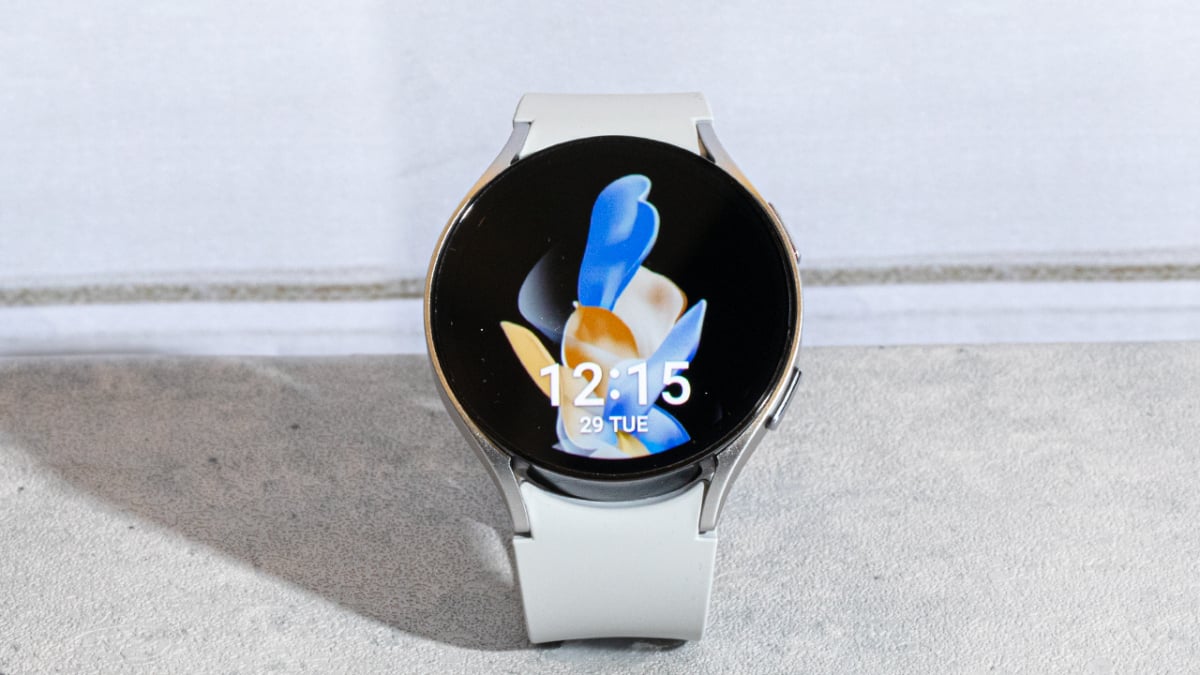Entertainment
Samsung Galaxy Watch 6 review: Much better than Pixel Watch

Where Google drops the ball, Samsung provides.
Launched summer 2023, the $300 Samsung Galaxy Watch 6 is a rare example of a device that shoves its most direct competitor into a locker and steals its lunch money. Most of the time with devices from big tech brands, there’s a case to be made in multiple directions, but in the case of the Galaxy Watch 6 and Google’s Pixel Watch, there’s no comparison.
With a big, eminently useful display, a smorgasbord of fitness and sleep tracking features, and adequate battery life, the Samsung Galaxy Watch 6 is the smartwatch to get if you’re an Android owner. Doubly so if you happen to have a Samsung phone, specifically.
Dynamite display

The app screen can fit plenty of icons.
Credit: Molly Flores/Mashable
Samsung didn’t rock the boat with the Galaxy Watch 6’s appearance. This is, unsurprisingly, a fairly no-frills device that wouldn’t look out of place as a nondescript smartwatch in a TV show. The circular watch face is flanked on one side by a home button and a Samsung Wallet shortcut button, while everything else is done by touch. Oh, and the Galaxy Watch 6 comes in three colors: Graphite, gold, and silver.
Samsung is offering 40mm and 44mm versions of the watch, but regardless of which version you pick, the display is roughly 20 percent larger than the previous model, with a 30 percent reduction in bezel size. There is no physical rotating bezel here; you need to buy a Galaxy Watch 6 Classic for that.
In practice, all of that means the Galaxy Watch 6 has a pretty gorgeous and, more importantly, functional display. Notifications are easy to read from a short distance, as is the part where it tells time. You know, the thing watches are made for. You can even use a full keyboard for responding to texts, though I wouldn’t recommend this unless the situation absolutely demands it. Just trying to type the word “Hey” with my big fingers produced gibberish.
While there isn’t a physical rotating bezel, you can run your fingers along the bezel to quickly scroll through all of the different screens (called “Tiles” here) that are available on Galaxy Watch 6. This, combined with the home button, makes navigation quick and painless. Swiping down from the top of the screen brings up a quick menu (like on any smartphone) while swiping up from the bottom pulls up a full list of installed apps.
Speaking of which, the Galaxy Watch 6 comes with 16GB of on-board storage. That’s obviously much less than the 32GB available on Pixel Watch, but that’s not super important for a smartwatch and Galaxy Watch 6 wins on so many other counts that we’ll discuss later that it’s barely even worth noting.
All the sleep and fitness tracking you could want

This little screen is my favorite.
Credit: Molly Flores/Mashable
Most of the fitness and sleep tracking features on Galaxy Watch 6 are holdovers from last year, but that doesn’t mean they aren’t worth praising anyway. Here’s a quick list of the kinds of things you can do with Galaxy Watch 6:
-
Set your body composition for personalized fitness goal tracking
-
Measure skin temperature while sleeping, to help predict menstrual cycles
-
Detect irregular heartbeats and notify the user about it
-
Measure blood pressure
-
Take an EKG
-
Track your sleep patterns
I should note that the blood pressure and EKG features are exclusive to Samsung phones. In general, you need an account with the Samsung Health ecosystem to access a lot of advanced features for Galaxy Watch 6, like the body composition setup and some of the more granular sleep tracking features. Device exclusivity for useful features is always a bummer, doubly so when a bespoke login is required. Thumbs down to that.
But I will give a thumbs up to the amount of things you can do just from the watch itself. For instance, you can get basic readouts of your sleep habits, including consistency scores that measure how reliably you sleep through the night without waking up. Personally, I always wake up sometime between 3-5 a.m., and my sleep consistency score reflects that.
Sleep tracking is also good at factoring in those gaps in your sleep cycle and telling you how many total hours you got, while also showing which times you were awake. I did notice that it wasn’t super great at detecting short naps, but I suppose that’s not really what sleep tracking is for, anyway.

This is how it senses things in your skin.
Credit: Molly Flores/Mashable
What I appreciated most, however, is how the Galaxy Watch 6 works with my walking habits. I try to go on at least one long walk every day, weather permitting. Like any smartwatch worth its salt, Galaxy Watch 6 counts your steps, active time, and calories burned in any given day, though it does so with a nice little heart graphic that fills in as you complete your goals.
I found this genuinely motivating. As someone who loves video games, I get a little hit of serotonin every time I make a meter fill up. Samsung’s gamified activity interface on Galaxy Watch 6 worked for me, persuading me to go out on one more walk in the evening just to make those meters fill up.
There is one minor downside to all of this. By default, the Galaxy Watch 6 automatically detects when you’re up and moving around, occasionally notifying you if you’ve hit a certain milestone like 10 consecutive minutes of walking. This feature is…iffy. It regularly triggers when I’ve barely done any activity at all (such as walking from my bedroom to the kitchen and back), and multiple times throughout the day will demand that I get up and move.
Is that probably for the greatest? Absolutely. But is it also annoying and pushy? Absolutely.
Eating Pixel Watch’s lunch
Let’s address the elephant in the room. Galaxy Watch 6 is probably the most direct competitor there is to Google’s Pixel Watch, released a year ago. These are both Android-centric smartwatches with a big gulf in available features between the two that is worth talking about. Oh, and one is substantially cheaper than the other; Samsung’s watch starts at $300, while Google’s starts at $350.
Remember the body composition, skin temperature, blood pressure, and irregular heartbeat tricks the Galaxy Watch 6 can pull off? The Pixel Watch supports none of those. Google’s watch felt kind of barebones at launch, and that’s only gotten more stark over time. There may be a Pixel Watch 2 in the near future that closes the gap, but right now, fitness and health devotees will get more out of a Galaxy Watch 6 than a Pixel Watch.
Speaking of getting more, Galaxy Watch 6 delivers maybe a day and a half of use with the always-on display turned on. That’s not extraordinary, but it is better than Pixel Watch, which clocked in at a little less than 24 hours of battery life for me. Samsung also says you can get 40 hours out of the Galaxy Watch 6 by turning the always-on display off, though I feel strongly that having it on improves the experience greatly.
In other words, the battery life on Galaxy Watch 6 is good enough that putting it on the charger for 20 or 30 minutes while you get ready in the morning will more or less keep it from dying on you too often.
Android owners only

It’s the winnner, for now.
Credit: Molly Flores/Mashable
By now, hopefully I’ve made my point: Android owners (specifically Samsung phone owners) don’t really have a better choice when it comes to the big, mainstream smartwatches that are available right now.
Between its big and useful display, a fairly thorough suite of health and fitness features, and more than adequate battery life, the Samsung Galaxy Watch 6 has your back. I dearly wish it didn’t lock a couple of features behind Samsung device exclusivity, and some of the automatic health alerts are a little annoying. But overall, the only reason for a smartwatch-needy Android owner to wait would be to see if Google launches a second Pixel Watch soon.
Even if it does, Samsung’s several-years-long head-start might be too much for Google to overcome in a year.
Topics
Samsung
Smartwatches
-

 Business7 days ago
Business7 days agoLondon’s first defense tech hackathon brings Ukraine war closer to the city’s startups
-

 Entertainment7 days ago
Entertainment7 days agoMark Zuckerberg has found a new sense of style. Why?
-

 Business6 days ago
Business6 days agoHumanoid robots are learning to fall well
-

 Entertainment6 days ago
Entertainment6 days ago2024 summer TV preview: 33 TV shows to watch this summer
-

 Business5 days ago
Business5 days agoGoogle Gemini: Everything you need to know about the new generative AI platform
-

 Entertainment5 days ago
Entertainment5 days ago‘Bridgerton’: Everything you need to remember before Season 3
-

 Business5 days ago
Business5 days agoIndian ride-hailing giant Ola cuts 180 jobs in profitability push
-

 Entertainment4 days ago
Entertainment4 days agoHow to unblock porn sites: Greatest VPN for porn in 2024




























